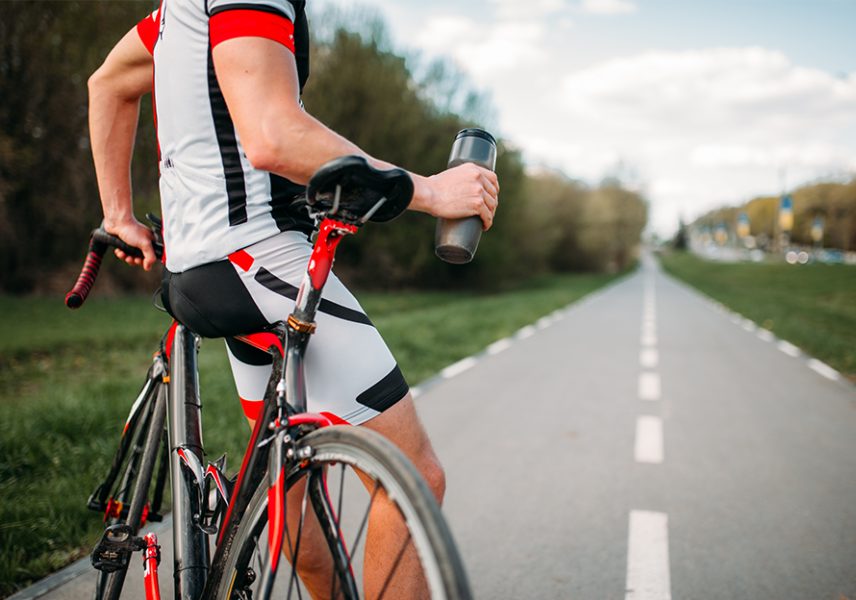Let’s recap what VO2max is
How to increase VO2max, here are some running workouts. We have already talked about the VO2max parameter in a previous article, but let’s summarize some essential points about this parameter:
- VO2max represents the body’s maximum capacity to use oxygen during physical effort;
- it is a genetically established parameter, but
- can be trained and improved up to 25% more;
- in particular, the threshold at which the exercise passes from the aerobic to the anaerobic threshold and how long we maintain the VO2max can be increased.
Importance of VO2max in running
Improving our ability to expend oxygen to produce energy is fundamental to achieving good performance. Of course, VO2max is a parameter that may seem invariable, impossible to improve, being linked – as has been said – to genetics, sex and age of each individual. But it is by working on athletic parameters that important results can be achieved precisely in this sense. But what workouts can we focus on?
Long vs Repeated
Let’s immediately clarify an important factor: an excellent VO2max is useful for both endurance athletes and sprinters, for the simple fact that a high availability of oxygen at a muscular level equates to being able to push harder and get tired less. It is often believed that VO2max is a parameter for sprinters or for those who run short distances on the track; while marathon runners look a lot at maximum aerobic capacity. In reality they are two sides of the same coin from a training point of view. We see it below.
The response of runners, at least those who do not work on the track, is instinctively to progress in distances, following the wrong deduction that, since it is oxygen, “breath” and “lungs” are needed. So get used to long distances. But the body works differently due to its ability to adapt. Of course, every training session affects better athletic performance and possibly also VO2max. In endurance sports, half marathons and marathons, training can focus on the main aspect of the anaerobic threshold.
What are repetitions in running
By repeated we mean a sequence of more or less intense performances (generally we talk about high intensity), interspersed with recovery or rest periods. The principle, of course, is the one that underlies interval training or HIIT high intensity interval training. In the race the procedure is to foresee some routes:
- short and fast runs of 100-200 m with or without altitude difference, interspersed with light running or walking for recovery (repeated short or short);
- medium and fast from 200 to 2000 m interspersed with light running or walking for recovery (medium repetitions);
- Repeats up to 10 km or in any case on longer fractions (long repeats) used to test the pace at which to tackle a race.
A classic interval in running is the 4×1000 m or 6×1000 m with one minute intervals, at variable intensity depending on the athletic preparation, but it is just an example.
Who should train with the repetition method
Let’s say that repetitions are a more advanced workout compared to simply improving your pace per km. The repetition method should be practiced only by those who:
- Already has a good running technique;
- Not too far from his ideal weight;
- Has already gained enough distance and pace and wants to improve.
Repeated and neophytes
For beginners, repetitions are therefore to be avoided and much must be done first on the front of the prepaedeutics to acquire the running technique. Pushing then, with rips uphill for example, is not ideal for those who have not yet acquired the basics or are overweight.
Instead, the first step is to set a simple goal; to reach the 5 or 10 km continuous running for example; or to run them from time to time at a better pace even of a few hundredths of a second. Progression and recovery are the cornerstones of a safe training (even first comes the check of one’s health with a sports doctor) that does not lead to injuries or worse.
Finally, the repetition method can be declined in different ways depending on the objective. In this article we will talk about some workouts to increase your VO2max, but you can pursue different purposes by changing parameters.
Who needs workouts to increase VO2max
How to train to improve VO2max is a topic, it has been said, that can interest all runners. Since this is a rather difficult parameter to change, we will work on the maximum aerobic threshold and on our own body weight through the diet. The sprinters will prefer it anyway.
Maximum aerobic speed or VAM: field tests
Studies show how training at maximum aerobic capacity can lead to the highest VO2max results. But how do we calculate VAM or maximum aerobic capacity? If you do not have a sports watch, a cardio band or you do not want to test your parameters in the laboratory, the method is the field test, for example, running at the maximum speed we can maintain for six minutes. Measured the speed, distance traveled / time, we will know at what speed to do in our exercises.
Some examples of repetitive workouts to increase VO2max, with workouts around the hour.
Method 1
- Warm-up at least 20 minutes at a gentle pace or with very short accelerations to prepare for the gesture;
- 5’ at maximum aerobic capacity and recovery of as many minutes;
- Interruption and fatigue when the ability to maintain VAM halves.
Method 2
- Warm-up at least 20 minutes at a gentle pace or with very short accelerations to prepare for the gesture;
- Interval of 60″ at VAM and recovery of as many seconds
- Establish with a trainer how many repetitions depending on your fitness status;
Method 3
- Warm-up at least 20 minutes at a gentle pace or with very short accelerations to prepare for the gesture;
- 5-10×100 or 5-10×200 on a slight slope or climb that is not too steep (depends on your starting level and how steep the climb is).
- Active recovery in the descent and restart only at full recovery.
- This workout is made easier by being able to track the VAM with a cardio band or smartwatch.
Before you go: best supplements for running
The choice, since we are dealing with workouts aimed at performance, is to get to the training in optimal conditions so not on the days when we are tired and not in a carbohydrate deficit. We talked about this in another article, but the first choice goes to fructose 1-6 diphosphate to work on VO2max.
- A sip of ATP BOOSTER 3.0 before training;
- A sip halfway through recovery;
- Every morning or immediately after lunch Sprintade® Creafos®,
or a scoop in a bottle.
 04/03/22
04/03/22 6
6





